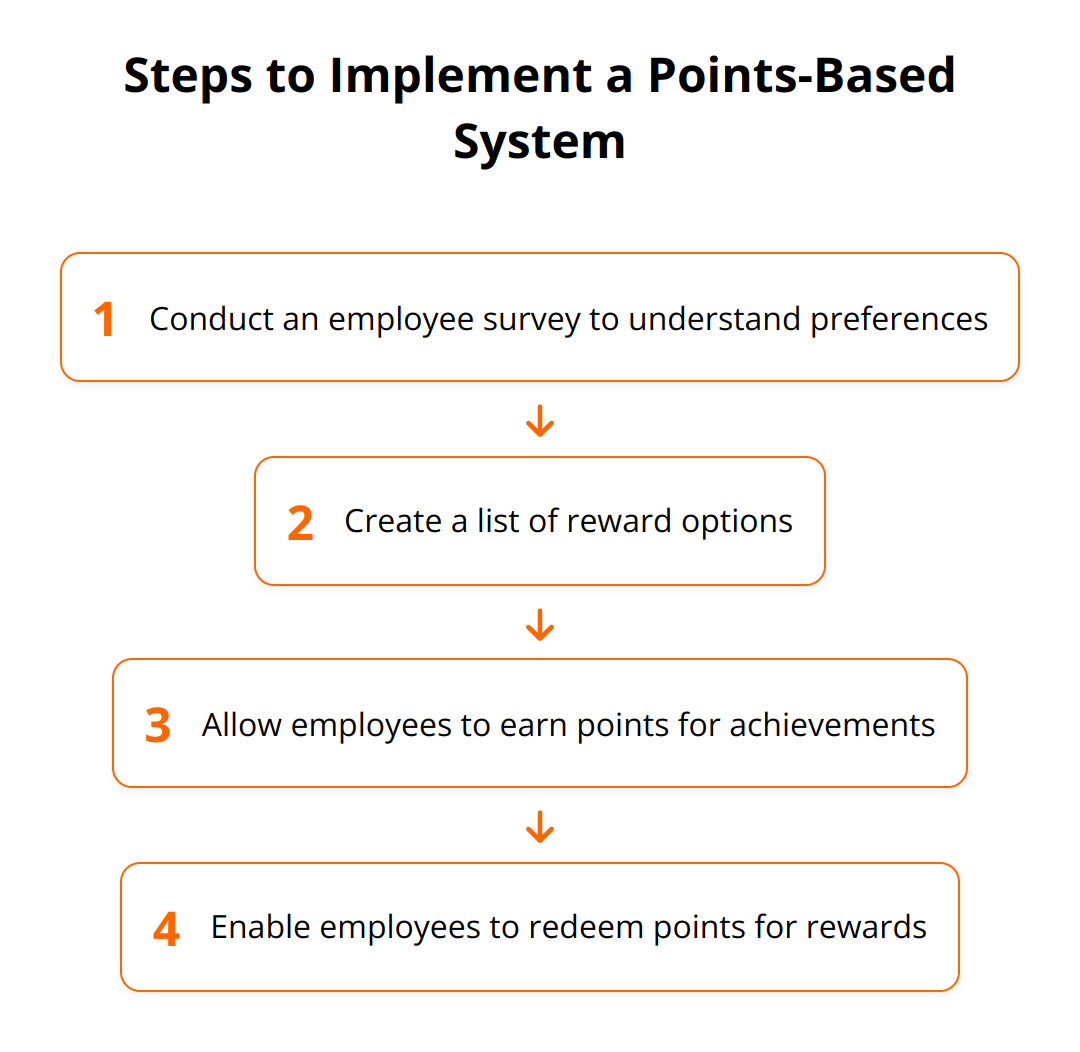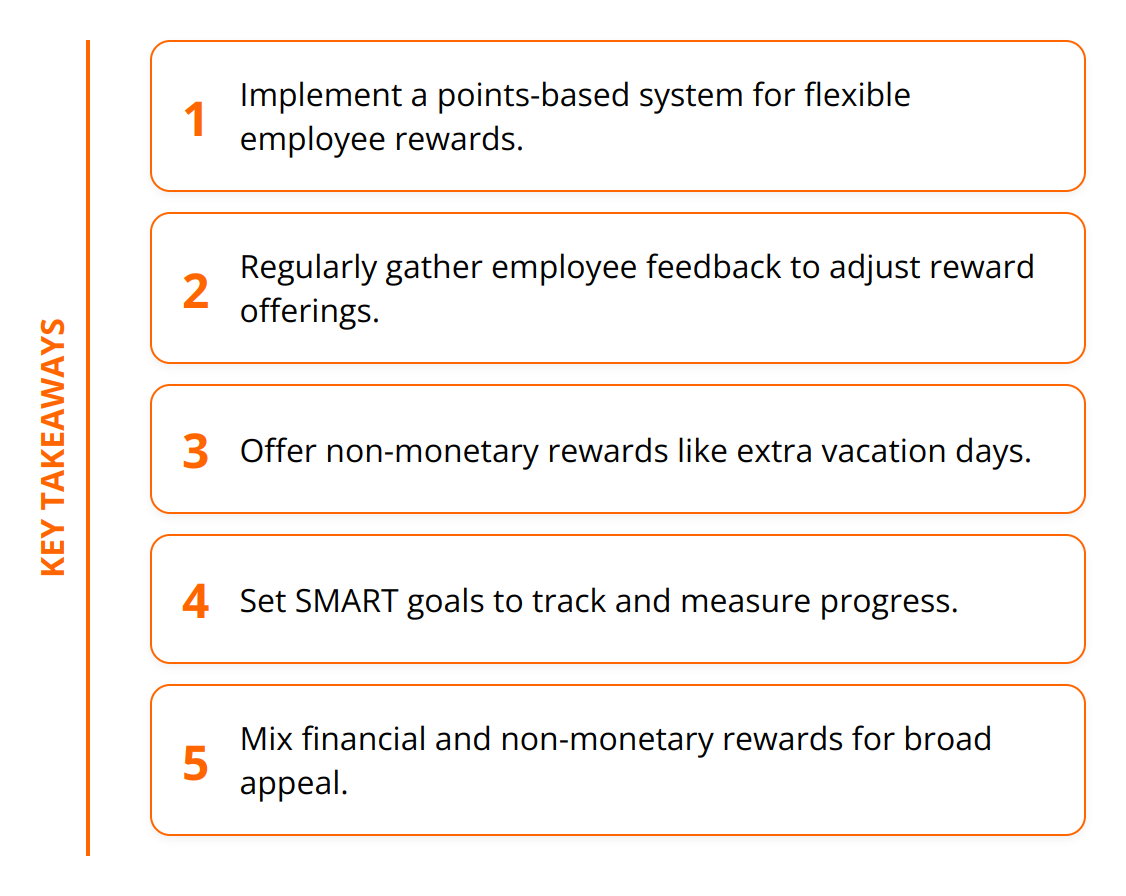
An effective employee reward system can transform your workplace. It boosts morale, reduces turnover, and enhances productivity.
We at Reward the World know the importance of designing and implementing such systems. Let’s explore practical tips and best practices for rewarding your employees.
Why Are Employee Reward Systems Important?
A well-structured employee reward system can significantly transform the dynamics of your workplace. Not only does it enhance employee morale, but it also leads to substantial improvements in engagement, productivity, and retention.

Boosts Morale and Engagement
Recognition is a powerful motivator. When employees receive rewards tailored to their preferences, their morale and job satisfaction increase. This is backed by the fact that 88% of employees believe it’s essential for companies to recognize and reward their staff. Engaged employees are more committed to their roles and are less likely to feel burnt out. Personalized rewards, such as gift cards or extra time off, resonate well with employees and keep them motivated.
Reduces Turnover Rates
High turnover rates can be detrimental to any organization. Employee recognition can address this issue head-on. According to research, 63% of recognized employees are extremely unlikely to look for a new job in the upcoming months. When employees feel valued and appreciated, they are more inclined to stay with the company, reducing the costs and disruptions associated with high turnover.
Improves Productivity and Performance
Employees who feel recognized and valued tend to perform better. Studies have shown that timely recognition can double productivity. Organizations can implement a variety of reward types to achieve this, such as public recognition, bonuses, or points-based systems. The key is to make the rewards relevant and aligned with the company’s objectives.

Here are practical ways to leverage employee reward systems:
- Create a points-based system where employees can earn points for desired behaviors and achievements, which they can redeem for rewards.
- Offer non-monetary rewards like additional vacation days, flexible working hours, or company-branded swag.
- Organize team activities such as happy hours, movie nights, or even adventurous outings to build camaraderie.
- Utilize technology to streamline and personalize the reward experience. Platforms that support social recognition can be particularly effective.
For more on this topic, check out how effective reward systems can reduce turnover and boost productivity.
By integrating these best practices, you can create an environment where employees are consistently motivated, engaged, and aligned with your organizational goals.
What Types of Employee Rewards Work Best?
Financial Rewards
Financial incentives remain a powerful motivator. Bonuses, raises, and profit-sharing schemes are common forms of financial rewards. A 2021 study by Deloitte found that 75% of organizations offer cash bonuses. Additionally, financial rewards often yield immediate boosts in performance, making them suitable for deadlines and high-stake projects.
Non-Monetary Rewards
Non-monetary rewards can be just as impactful, if not more so, given their personalized nature. Awards like extra vacation days, flexible working hours, and public recognition tap into the intrinsic motivations of employees. A Gallup poll reveals that 65% of employees prefer non-cash incentives. The versatility of non-monetary rewards allows companies to accommodate diverse employee preferences. Consider offering health club memberships or unique experiences like team-building activities.

Performance-Based Rewards
Performance-based rewards link incentives directly to an employee’s output or achievements. These can affect long-term engagement and blend both financial and non-monetary elements. Common strategies include commission-based pay, employee of the month awards, and milestone celebrations. Studies indicate that integrating performance-based rewards can enhance engagement and productivity. Personalizing these rewards based on employee input can further amplify their efficacy.

Practical tips for implementing these rewards effectively:
- Operationalize a clear and transparent points-based system.
- Mix financial and non-monetary rewards to cover broad employee preferences.
- Use performance metrics to tailor rewards accurately.
- Leverage employee feedback to fine-tune rewards.
Incorporating these types of rewards can lead to a more motivated and engaged workforce, ensuring that employees feel valued and respected.
Best Practices for Implementing Reward Systems
Set Clear and Achievable Goals
To create an effective reward system, it’s essential to establish clear and achievable goals. This ensures that employees understand what is expected of them and what they can achieve. Goals should be specific, measurable, attainable, relevant, and time-bound (SMART). For instance, if increasing sales is a priority, set specific targets for employees to reach within a certain timeframe, and tie rewards to these milestones. Data from Deloitte reveals that organizations with specific goals are 30% more likely to see improved performance metrics.
Customize Rewards to Employee Preferences
Personalization matters. Recognizing individual preferences can amplify the impact of the rewards. Surveys have shown that 65% of employees prefer non-cash incentives. Offering a mix of rewards such as extra vacation days, public recognition, or health club memberships can cater to diverse preferences. Utilize regular employee feedback to tailor rewards. A points-based system, where employees choose their rewards, can be particularly effective. This approach ensures that rewards remain relevant and appreciated.

Regularly Review and Update the Reward System
A static reward system can become outdated and ineffective over time. Regular reviews and updates are critical for maintaining its relevance and impact. Conduct quarterly assessments to gather feedback and make necessary adjustments. Research suggests that organizations updating their reward systems annually see a 20% improvement in employee engagement. Adjust rewards based on current trends, employee feedback, and organizational goals to keep the system dynamic and effective.
Actionable Tips:
- Gather employee feedback quarterly to adjust rewards.
- Implement a points-based system for flexibility.
- Set SMART goals to track and measure progress effectively.
- Mix reward types to cover broad preferences.
- Monitor trends and update rewards accordingly.
To learn more about managing dynamic reward systems, read here.
Conclusion
Implementing an effective employee reward system offers numerous benefits. It significantly enhances morale, engagement, and productivity while reducing turnover rates. Employees feel valued and motivated, driving overall organizational success.

To recap, here are the best practices for an impactful reward system:
- Set SMART goals to ensure clarity and measurable progress.
- Customize rewards based on employee preferences to maximize impact.
- Regularly review and update the reward system to keep it relevant and effective.
- Mix financial and non-monetary rewards for a comprehensive approach.
- Use technology for streamlined and personalized reward experiences.
Continuous improvement of your reward system ensures you stay ahead in fostering a motivated and engaged workforce.
At Reward the World, we offer a dynamic platform that supports all your incentive needs. With instant delivery of eGift cards, cash payments, and points across 60 million rewards, our solution is suitable for all demographics and budgets. Learn more about how we can help you elevate employee recognition and boost organizational performance by visiting Reward the World.
Let’s embrace these best practices and build a workplace where employees feel consistently valued and motivated.
